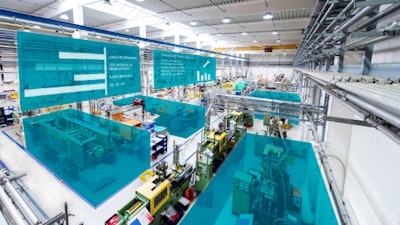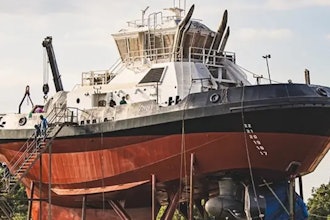
Everyone knows that optimizing production lines is essential for staying competitive and ensuring profitability. Real-Time Location Systems (RTLS) have emerged as a game-changing technology that offers manufacturers unprecedented visibility and control over their operations. In this article, we will explore what RTLS is and how manufacturers can leverage it to streamline their production lines. We will also delve into the various types of RTLS, including Ultra-Wideband (UWB), Bluetooth Low Energy (BLE) and Wi-Fi, to understand how each technology contributes to enhanced efficiency.
What is RTLS?
RTLS, or Real-Time Location System, is a technology that enables organizations to monitor and track the location and movement of assets, equipment and personnel in real time. It uses a combination of hardware and software components to gather data from sensors and tags attached to objects or individuals, processing this data to provide precise location information.
The primary goal of RTLS is to provide real-time visibility into the whereabouts and status of assets within a designated area, such as a manufacturing facility. This data is invaluable for enhancing operational efficiency, improving asset utilization and ensuring the safety and security of the workforce.
 Ubisense
Ubisense
Types of RTLS Technologies
Ultra-Wideband (UWB)
UWB RTLS is known for its exceptional precision in tracking objects and people. It operates by transmitting short-duration pulses of energy across a broad spectrum of frequencies. By measuring the time it takes for these pulses to travel between UWB tags and receivers, the system can calculate distances with remarkable accuracy.
Manufacturers can use UWB RTLS to track the exact location of assets and personnel within a few centimeters. This level of precision is invaluable for optimizing production lines, preventing collisions between machinery and workers and reducing downtime.
Bluetooth Low Energy (BLE)
BLE RTLS relies on low-power Bluetooth technology to track assets and individuals. BLE tags are cost-effective and have a longer battery life compared to some other RTLS options, but their signals can be more prone to interference.
Manufacturers can utilize BLE RTLS to monitor the movement of equipment, tools and even workers. This data can help identify bottlenecks, reduce equipment search times and enhance workflow efficiency.
Wi-Fi
Wi-Fi-based RTLS leverages existing Wi-Fi infrastructure to track assets and personnel. This makes it a cost-effective choice for many organizations.
Manufacturers can implement Wi-Fi RTLS to monitor the location of assets and personnel across their facilities. It provides a broader coverage area compared to other RTLS technologies, making it suitable for large manufacturing plants, but can also suffer from interference in complex environments.
Optimizing Production Lines with RTLS
Manufacturers can harness the power of RTLS to fully optimize their production lines in several ways:
Asset Tracking: RTLS enables real-time tracking of equipment, tools and materials. This visibility allows manufacturers to ensure that the right resources are available at the right time, minimizing delays and increasing production efficiency.
Workforce Safety: With RTLS, manufacturers can enhance workplace safety by monitoring the location of workers in real time. Alerts can be triggered if employees enter hazardous areas or approach dangerous machinery, reducing the risk of accidents.
Workflow Analysis: RTLS data can be used to analyze workflow patterns, identify bottlenecks and optimize the layout of the production line. This leads to smoother operations and improved overall productivity.
Predictive Maintenance: By tracking the usage and movement of machinery and equipment, manufacturers can implement predictive maintenance programs. This proactive approach reduces downtime and prevents costly breakdowns.
Inventory Management: RTLS helps in monitoring inventory levels and tracking the movement of materials. Manufacturers can maintain optimal stock levels, reduce waste and improve supply chain management.
Conclusion
Real-Time Location Systems (RTLS) offer manufacturers a powerful tool for optimizing their production lines. Whether through Ultra-Wideband (UWB), Bluetooth Low Energy (BLE), or Wi-Fi-based technology, RTLS provides the real-time visibility needed to enhance efficiency, improve safety and ultimately boost profitability. As manufacturing continues to evolve, embracing RTLS is becoming a critical step toward staying competitive in an ever-changing industry.




















